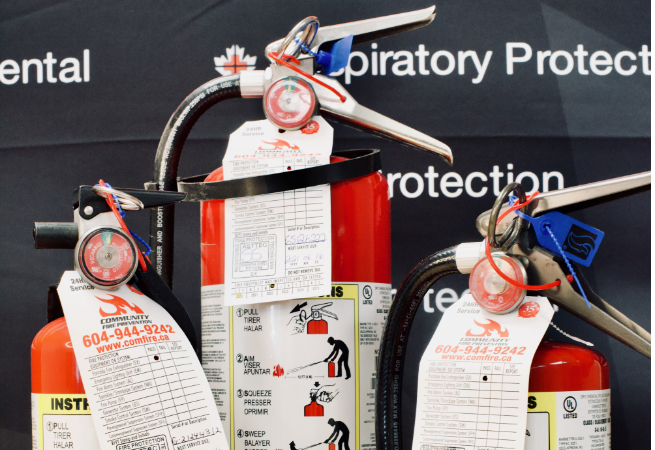How to Inspect Different Types of Fall Protection Equipment
For workplaces that require the use of fall protection equipment, it is important to establish a complete fall protection program that includes educating and training workers on how to properly inspect their fall protection equipment. Some of the steps that should be taken when inspecting fall protection equipment include:
Webbing on a Body Belt, Harness, or Lanyard
Make sure to inspect the entire surface of webbing for any damage by beginning at one end and working your way to the other. Start by bending the webbing in an inverted “U” and holding the body side of the belt, harness, or lanyard towards you. As you work your way from one end to the other, watch for any frayed edges, broken fibres, pulled stitches, cuts, or chemical damage. Broken webbing strands will most often appear as tufts on the surface.
Buckles
While inspecting buckles, make sure to look for any loose, distorted, or broken grommets, as well as to check the belt for any torn or elongated holes that could cause the buckle to slip. Next, inspect the buckle for distortion and sharp edges, ensuring that the outer and centre bars are straight and that they overlap the buckle frame, moving freely, back and forth, in their sockets. It is also important to check that the rivets are tight and that the body side of the rivet base and outside rivet burr are sitting flat against the material.
Ropes
Older ropes that have been used frequently should be inspected on a regular basis. To properly inspect ropes in the workplace, simply rotate the rope and inspect it from end to end for worn, broken, fuzzy, or cut fibres. Weakened sections of the rope will have noticeable changes in the rope’s original diameter.
Hardware
All hardware, including forged steel snaps and “D” rings, should be inspected for cracks, dents, bends, rust, signs of deformation, or other defects, as well as to ensure that the hardware is not damaging the belt or harness. As you inspect the hardware, it is also a good idea to take the time to inspect tool loops and belt sewing for any broken or stretched loops.
Safety Straps
Safety straps should be regularly checked for cut fibres or damaged stitches. This can be done by flexing the strap in an inverted “U” and going over the strap inch by inch. Make sure to note any cuts, frays, or corrosion damage.
If you would like to learn more about fall protection equipment inspection, or if you are interested in one of our mobile safety supply (first aid supply, fire protection, or safety equipment) or safety training and safety audit services, please contact EFAS at 604-294-EFAS or by filling out a contact form on our website.

